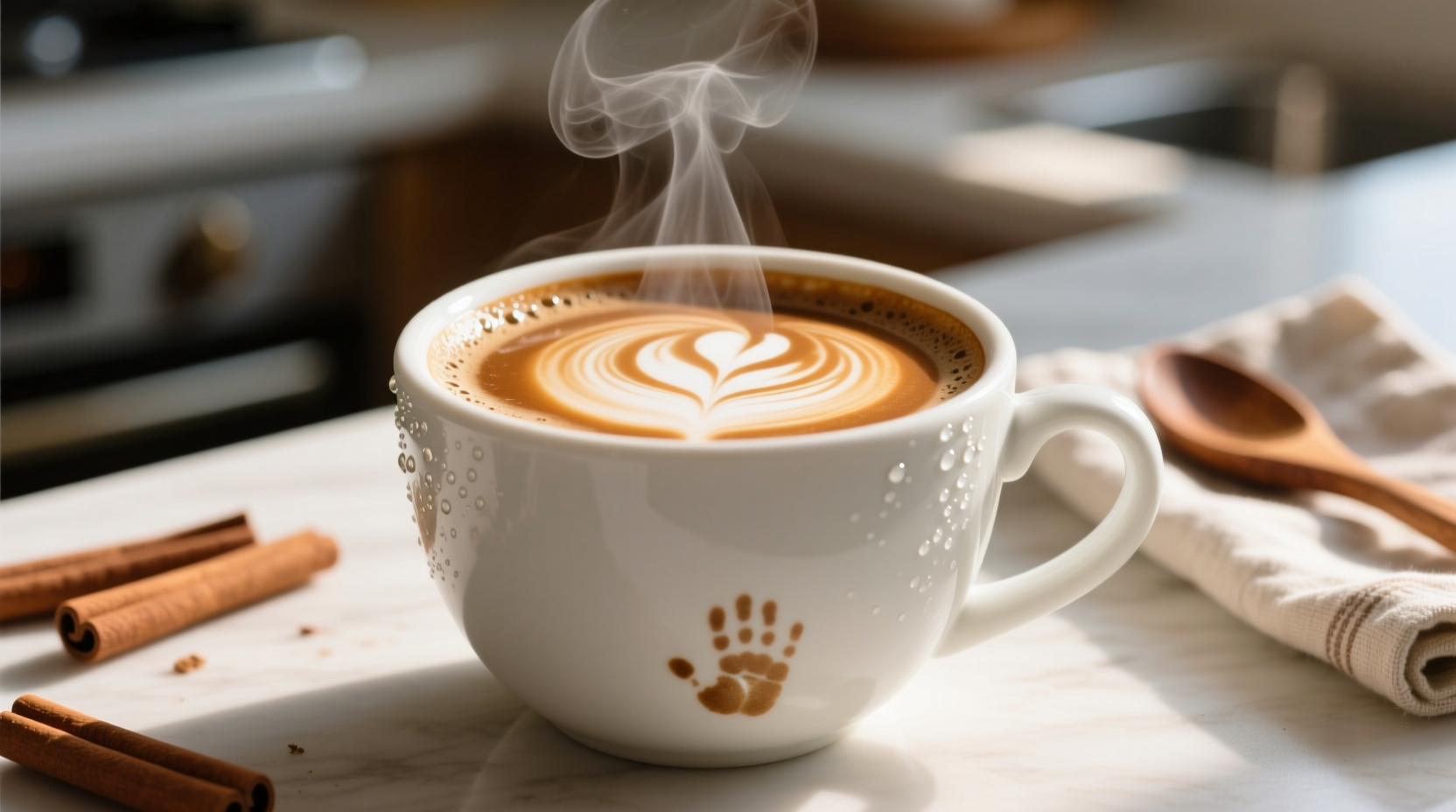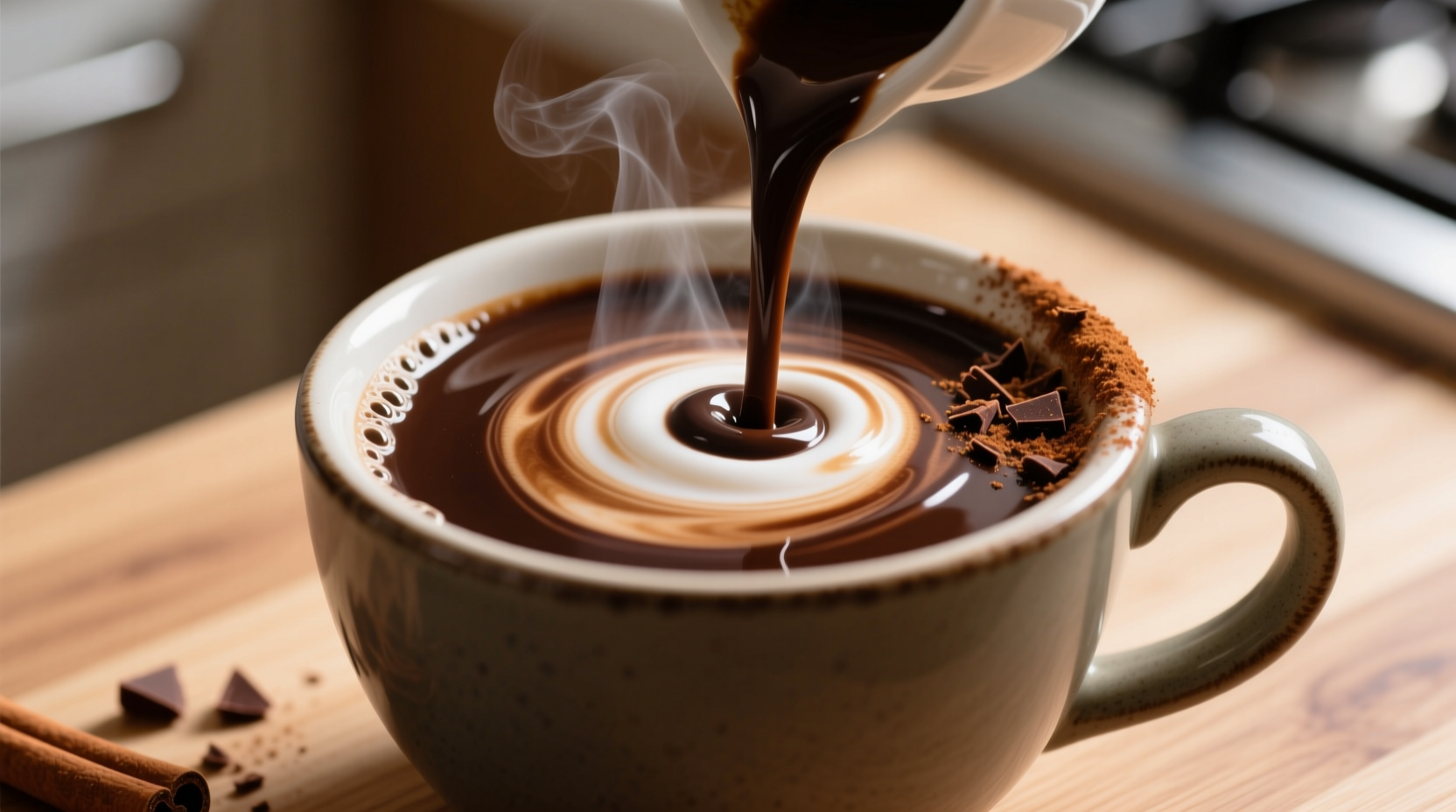If you've ever wondered what gives mocha its distinctive flavor or how it differs from regular coffee or hot chocolate, you're not alone. Understanding mocha's taste profile helps you appreciate this beloved beverage beyond just "coffee with chocolate." Whether you're ordering at a café or brewing at home, knowing what to expect from authentic mocha can transform your coffee experience.
Decoding the Mocha Flavor Profile
Mocha isn't just coffee with chocolate syrup added. True mocha flavor comes from a specific combination of high-quality ingredients and preparation methods. The taste experience unfolds in distinct phases as you sip:
- Initial impression: Aromas of dark chocolate and roasted coffee beans hit your senses
- Middle palate: Balanced bitterness from coffee melds with chocolate's natural sweetness
- Finish: Lingering notes of caramel, sometimes with subtle berry or wine-like undertones
The Specialty Coffee Association confirms that authentic mocha contains between 15-25% chocolate content relative to coffee, creating that signature balance where neither flavor dominates. Too much chocolate turns it into hot cocoa with coffee, while too little makes it merely coffee with a hint of chocolate.
Mocha vs. Similar Coffee Drinks: Understanding the Differences
| Beverage | Primary Flavor Notes | Chocolate Content | Coffee-to-Chocolate Ratio |
|---|---|---|---|
| Mocha | Chocolate, caramel, berry undertones | Moderate (15-25%) | 3:1 to 2:1 |
| Latte | Creamy, mild coffee | None | N/A |
| Hot Chocolate | Sweet chocolate, vanilla | High (40-60%) | 1:3 to 1:4 |
| Macchiato | Strong coffee, slight creaminess | None | N/A |
This comparison shows why mocha occupies a unique space in coffee culture. Unlike hot chocolate, which emphasizes sweetness and chocolate dominance, mocha maintains coffee as the foundation with chocolate enhancing rather than overwhelming the experience.
What Influences Mocha's Taste?
Several factors determine how your mocha will taste, explaining why the same drink can vary dramatically between establishments:
Coffee Bean Selection
Authentic Yemeni Mocha beans (from the port of Mocha) have naturally chocolatey notes with wine-like acidity. Most modern "mochas" use standard espresso with added chocolate, but specialty cafes increasingly source beans with inherent chocolate characteristics. According to the International Coffee Organization, beans grown at higher elevations with volcanic soil tend to develop more complex chocolate notes.
Chocolate Quality and Type
The chocolate component makes or breaks a mocha. High-quality mochas use real chocolate (minimum 60% cocoa) rather than syrups or powders. Dark chocolate creates a more sophisticated, less sweet profile, while milk chocolate produces a creamier, dessert-like beverage. The National Coffee Association notes that professional baristas typically use 1-2 ounces of melted chocolate per 6-8 ounce espresso shot for optimal balance.
Preparation Technique
How your mocha is made significantly impacts flavor development:
- Traditional method: Chocolate melted directly with espresso, creating emulsified richness
- Modern café style: Chocolate syrup added to espresso, then steamed milk incorporated
- Home brewing: Quality varies widely based on equipment and ingredient ratios
Improper technique—like adding chocolate to cold milk—creates separation and uneven flavor distribution. The Specialty Coffee Association's brewing guidelines emphasize that chocolate should be fully incorporated with the espresso before adding milk for optimal flavor integration.
Regional Variations in Mocha Flavor
Mocha isn't a standardized drink—it varies significantly by region and café, creating different taste experiences:
- European style: Less sweet, higher coffee-to-chocolate ratio, often using dark chocolate
- American café style: Sweeter, more chocolate-forward, frequently with flavored syrups added
- Middle Eastern tradition: Closer to the original Yemeni preparation with cardamom notes
- Japanese specialty: Precision-crafted with single-origin beans and artisanal chocolate
These variations explain why your "mocha" experience might differ dramatically depending on where you order it. Understanding these regional approaches helps set appropriate expectations for what mocha should taste like in different contexts.
How to Identify Authentic Mocha Flavor
Not all drinks labeled "mocha" deliver the genuine flavor profile. Here's how to recognize authentic mocha characteristics:
- You can taste the coffee foundation distinctly through the chocolate
- No artificial aftertaste or chemical sweetness
- Smooth texture without graininess or separation
- Complex flavor evolution from first sip to finish
- Subtle acidity balancing the chocolate sweetness
If your mocha tastes primarily like sweetened hot chocolate with coffee added, it's likely using low-quality ingredients or improper preparation. True mocha should satisfy both coffee lovers and chocolate enthusiasts without leaning too heavily toward either.
Perfect Pairings for Mocha
Mocha's unique flavor profile makes it exceptionally versatile for food pairings. Understanding these combinations enhances your appreciation of what mocha tastes like in different contexts:
- Breakfast: Almond croissants or brioche (the nuttiness complements mocha's chocolate notes)
- Afternoon: Dark chocolate truffles or biscotti (creates flavor layering)
- Evening: Tiramisu or chocolate-dipped strawberries (elevates dessert experience)
The flavor chemistry works because mocha contains similar compounds found in both coffee and chocolate, creating natural bridges to complementary foods. Food scientists at the Institute of Food Technologists note that mocha's methylxanthines (caffeine and theobromine) interact with taste receptors to enhance both bitter and sweet perceptions simultaneously.

Creating Authentic Mocha at Home
Recreating proper mocha flavor at home requires attention to detail. Follow these professional tips for the most authentic taste experience:
- Start with freshly brewed espresso (not regular coffee) for proper intensity
- Use high-quality dark chocolate (60-70% cocoa) melted directly into the espresso
- Maintain a 3:1 coffee-to-chocolate ratio for balanced flavor
- Heat milk separately to 140-150°F (60-65°C) before adding
- Combine all elements gradually while stirring constantly
Avoid common mistakes like using chocolate syrup instead of real chocolate, adding chocolate to cold milk, or using insufficient coffee strength. The National Coffee Association's home brewing guide emphasizes that proper temperature control (between 195-205°F for brewing) significantly impacts how flavor compounds are extracted from both coffee and chocolate.
Common Mocha Misconceptions
Several myths about mocha confuse consumers about what it should actually taste like:
- Misconception: Mocha is just coffee with chocolate syrup
Reality: Authentic mocha integrates chocolate at the brewing stage for emulsified richness - Misconception: All mochas should be very sweet
Reality: Traditional mochas balance sweetness with coffee's natural bitterness - Misconception: Mocha and hot chocolate with espresso are the same
Reality: Proper mocha has coffee as the foundation with chocolate enhancing it
Understanding these distinctions helps set appropriate expectations for what mocha should taste like, preventing disappointment when ordering or brewing.
When Mocha Tastes "Off": Troubleshooting Common Issues
Sometimes mocha doesn't deliver the expected flavor profile. Here's what might be happening:
- Bitter or burnt taste: Over-extracted espresso or chocolate scorched during melting
- Watery or weak flavor: Incorrect coffee-to-chocolate ratio or stale ingredients
- Grainy texture: Chocolate not properly melted or emulsified with coffee
- Artificial aftertaste: Low-quality syrups or flavorings instead of real chocolate
Professional baristas from the Barista Guild note that proper emulsification—creating a stable mixture where chocolate and coffee bind together—is the most common failure point in mocha preparation. This technical detail significantly impacts the final taste experience.
Conclusion: Embracing Mocha's Complex Flavor Journey
Mocha offers a sophisticated flavor experience that bridges coffee and chocolate worlds. When properly prepared, it delivers a complex profile where coffee's brightness meets chocolate's richness in perfect harmony. Understanding what mocha should taste like—neither purely coffee nor dessert-like—helps you appreciate this classic beverage in new ways.
Whether you're ordering at your favorite café or crafting the perfect cup at home, focus on quality ingredients and proper technique to experience mocha's authentic flavor profile. The next time you sip a well-made mocha, pay attention to how the flavors evolve from the initial chocolate aroma through the coffee-chocolate fusion to the lingering finish. This mindful approach transforms a simple beverage into a multi-sensory experience worth savoring.











 浙公网安备
33010002000092号
浙公网安备
33010002000092号 浙B2-20120091-4
浙B2-20120091-4